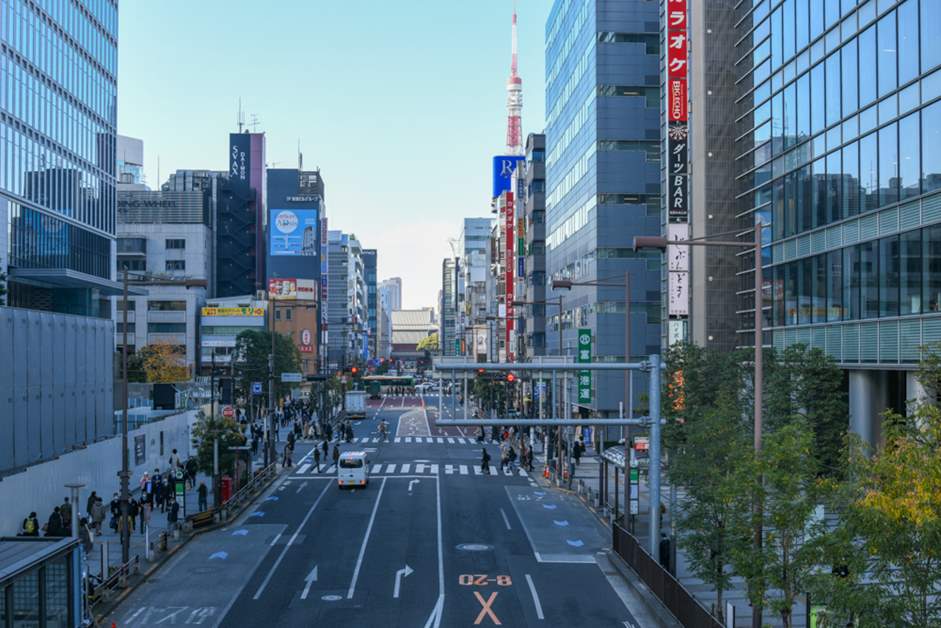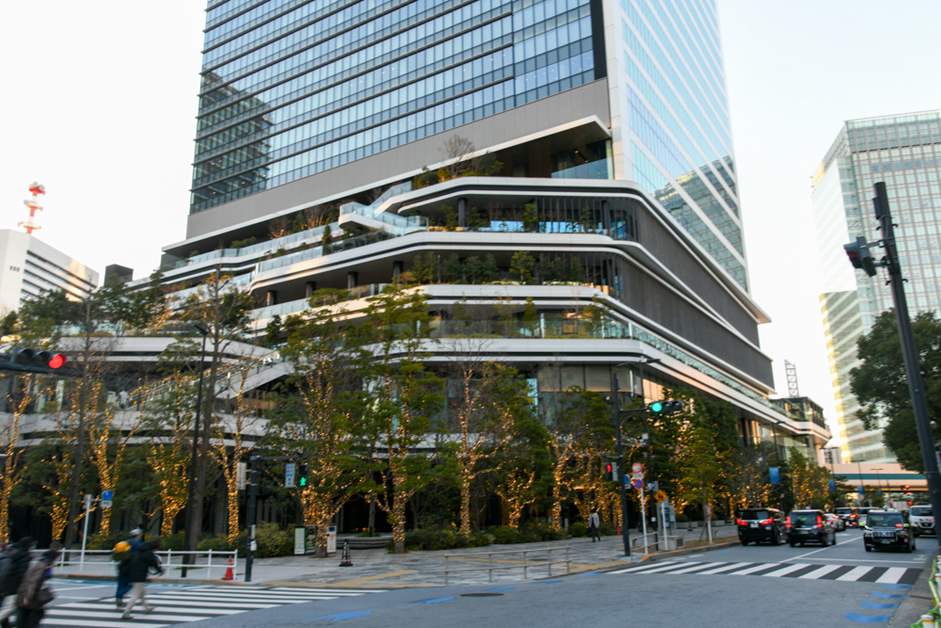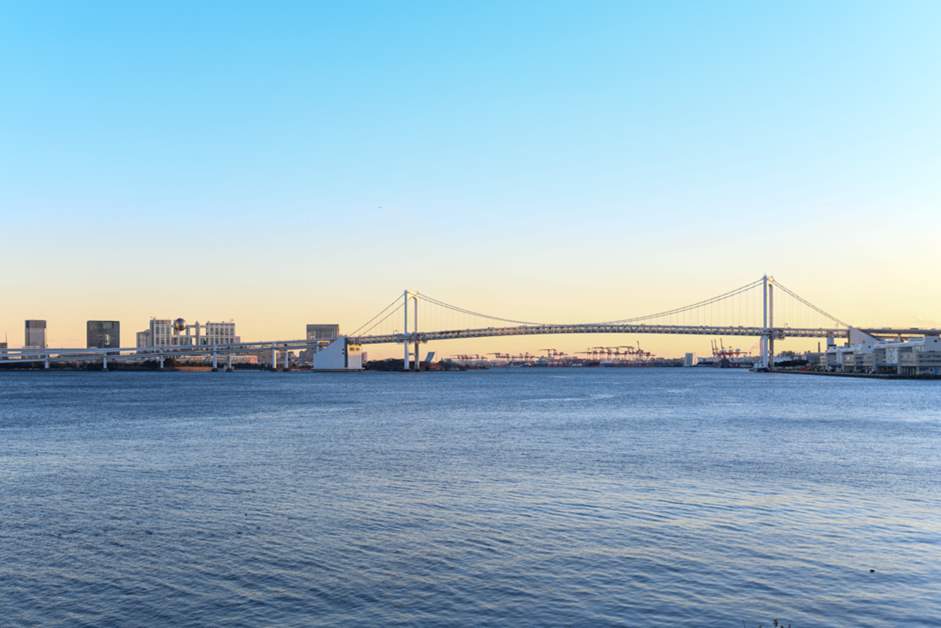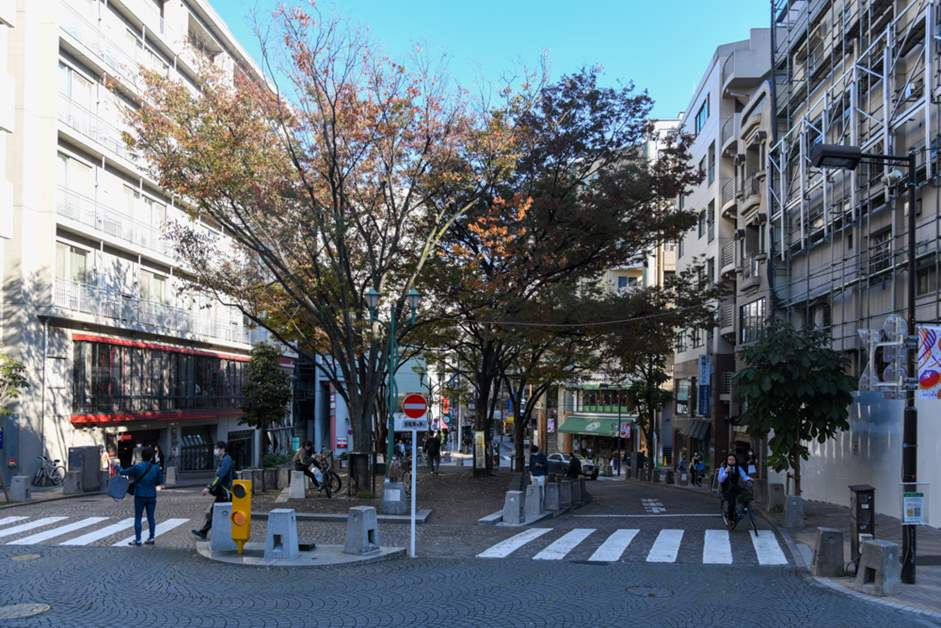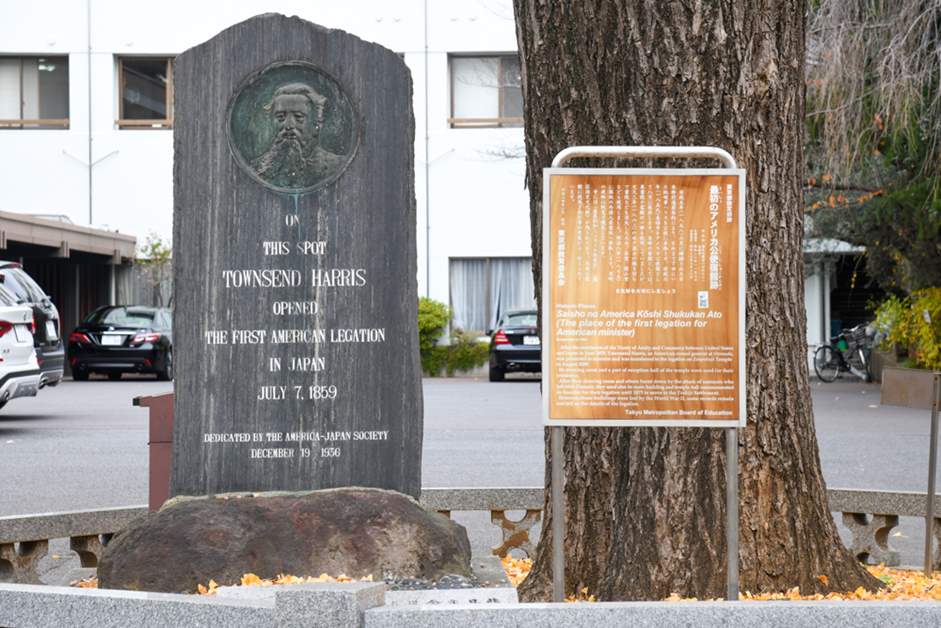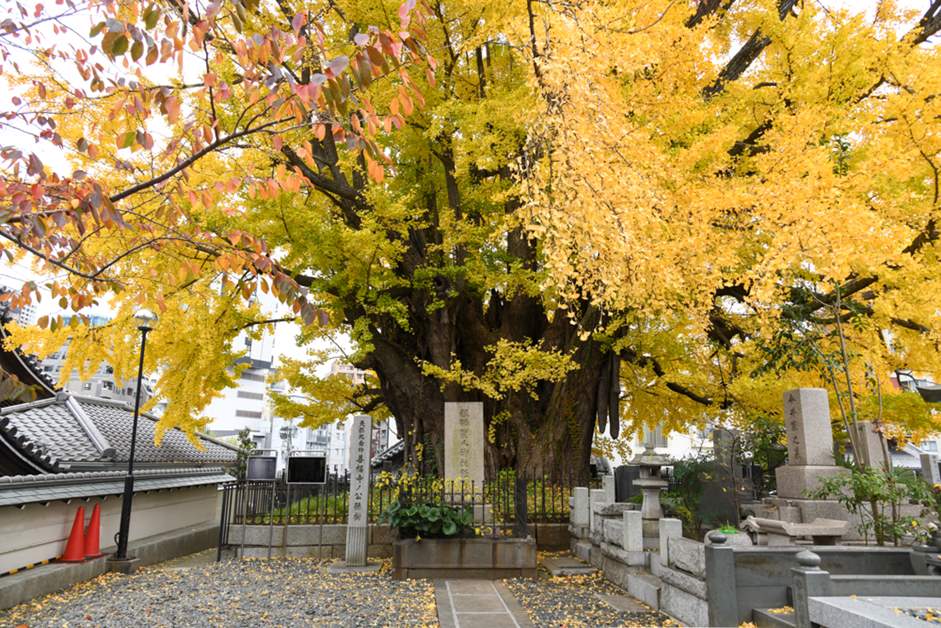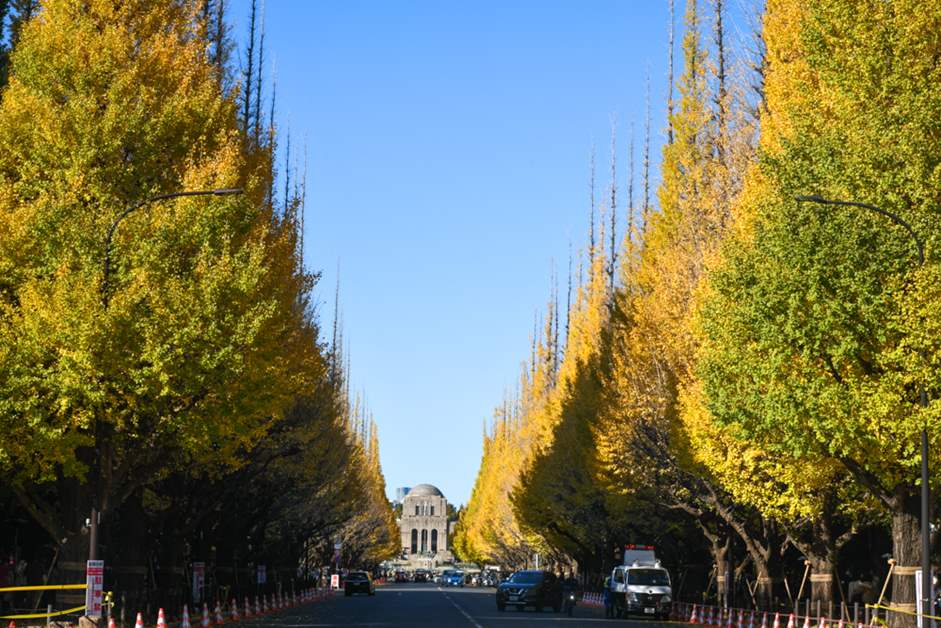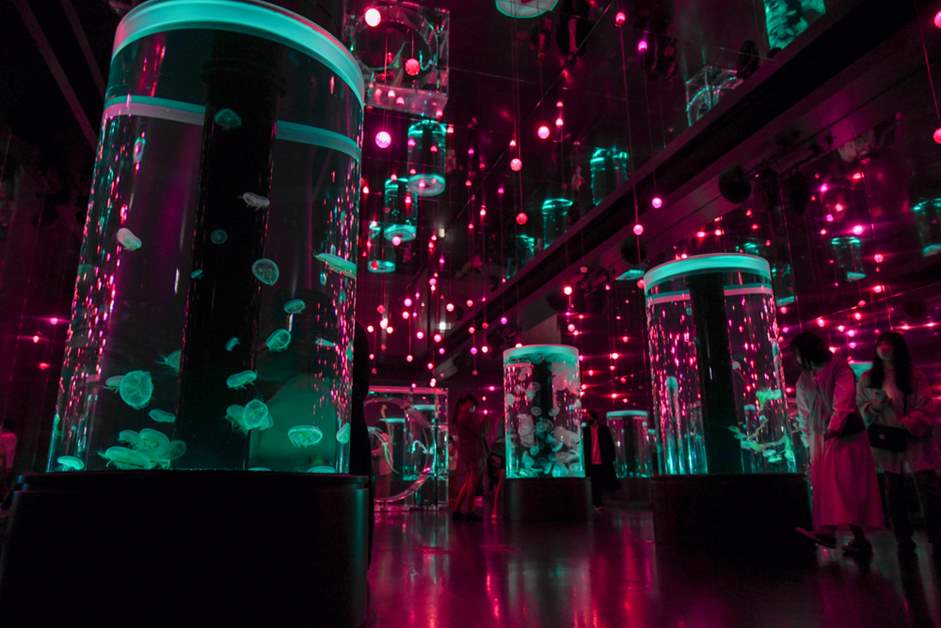Commemorative spots that showcase the connection between Japan and the U.S. are also included! Guide to the English version of the "Minato Ward Golden Route"
With Shinagawa Station and Hamamatsucho Station, which provide access to Haneda Airport (Tokyo International Airport), Minato Ward, Tokyo, is often the gateway to the city center for foreign travelers. Minato Ward is home to popular tourist spots such as Tokyo Tower, Roppongi Hills, and the National Art Center, Tokyo, but which tourist spots are actually attracting the attention of inbound travelers? To answer this question, we would like to introduce the "Minato City Golden Route," a one-day course on the 5 most popular spots by language, based on access data from our website. This first installment is English!
Starting from Hamamatsucho Station, the "gateway to Central Tokyo"
The English version of the "Minato City Golden Route" starts from Hamamatsucho Station, where the monorail to Haneda Airport arrives and departs. Hamamatsucho Station is a stop on the JR Yamanote Line, which circles around the center of Tokyo, and is a convenient station for getting anywhere in the heart of the city.
A five-minute walk from Hamamatsucho station toward the ocean will take you to Takeshiba, one of the hottest areas in Minato Ward.
Since the 17th century, when Tokugawa Ieyasu established the shogunate (government by samurai) in Edo (present-day Tokyo), Edo, which had been facing development and population growth, has built reclaimed land on the sea and expanded the size of the city. The Takeshiba area was also sea until the early 1920s. Today, the area is home to Takeshiba Wharf, where boats connect the city center with Tokyo's islands, and along with Odaiba across Tokyo Bay, it is one of Tokyo's leading bayfront scenic zones.
Since the 17th century, when Tokugawa Ieyasu established the shogunate (government by samurai) in Edo (present-day Tokyo), Edo, which had been facing development and population growth, has built reclaimed land on the sea and expanded the size of the city. The Takeshiba area was also sea until the early 1920s. Today, the area is home to Takeshiba Wharf, where boats connect the city center with Tokyo's islands, and along with Odaiba across Tokyo Bay, it is one of Tokyo's leading bayfront scenic zones.
Takeshiba is currently undergoing a major redevelopment project. Its two symbolic spots are the "Tokyo Port City Takeshiba" and "Waters Takeshiba" complexes, which opened in 2020. "Tokyo Port City Takeshiba," which also houses SoftBank's headquarters, is a cutting-edge building with a variety of technologies. Environmental information and congestion data obtained from cameras and sensors inside the building are used to create a comfortable building environment. There is also a convenience store where robots work, and you can meet robot security guards who patrol the building.
"Takeshiba Shin Hakkei," a large outdoor terrace (skip terrace), is located in the direction of the seaside, offering a panoramic view of Tokyo's bay coast from the upper floors. There are also numerous restaurants, and relaxing on the terrace with a cup of coffee from California's "Blue Bottle Coffee" in hand is recommended.
For more information on Takeshiba, please refer to this article.
Takeshiba area special: The charms of Takeshiba - rebirth through the creation of fantastic locales
https://visit-minato-city.tokyo/ja-jp/articles/406
For more information on Takeshiba, please refer to this article.
Takeshiba area special: The charms of Takeshiba - rebirth through the creation of fantastic locales
https://visit-minato-city.tokyo/ja-jp/articles/406
The bridge is an essential part of sightseeing in Tokyo!
The bridge is an essential part of sightseeing in Tokyo!
Rainbow Bridge, another popular spot for English speakers, can be seen from Takeshiba Pier. The 800-meter-long bridge, which connects central Tokyo and Odaiba, has become one of Tokyo's must-see sights since its opening in 1993. At night, it is colorfully illuminated, making it a famous night view spot.
In fact, the Rainbow Bridge is not only a sight to be seen from afar. It is also possible to cross the bridge on foot. The entrance to the bridge is the "Shibaura Anchorage," located near Shibaura Station on the Yurikamome Line. It is about 2 km from Takeshiba and can be reached on foot, but it is better to use the Yurikamome.
For more information on the Rainbow Bridge, see this article!
[Video Article] Take a Running Trip Around Tokyo's Minato Ward! Enjoy Running Around Rainbow Bridge and Tokyo Tower
https://visit-minato-city.tokyo/ja-jp/articles/423
[Video Article] Take a Running Trip Around Tokyo's Minato Ward! Enjoy Running Around Rainbow Bridge and Tokyo Tower
https://visit-minato-city.tokyo/ja-jp/articles/423
Memorial spots that show the connection between Japan and the U.S.
Next, from Daimon Station on the Toei Subway, adjacent to Hamamatsucho Station, take the Oedo Line bound for Roppongi/Tocho-mae to Azabu Juban Station two stops away. Opened in 2000, the Oedo Line is relatively new among Tokyo subways, with many stations built deep underground. Although not as deep as the neighboring Roppongi Station, which is "the deepest subway station in Japan underground" (42.3 meters from the ground to the platform!) the platform at Azabu Juban Station is also quite deep.
The entire area around Azabu Juban Station is the Azabu Juban shopping district, a bustling area that combines the atmosphere of a traditional Japanese shopping district with the scenery of modern stores and restaurants.
The entire area around Azabu Juban Station is the Azabu Juban shopping district, a bustling area that combines the atmosphere of a traditional Japanese shopping district with the scenery of modern stores and restaurants.
And about a 10-minute walk from Azabu Juban Station through the shopping district is Zempukuji Temple, which was founded in 824 and is famous not only for its more than 1,000-year history but also for being an important spot that tells of the connection between the U.S. and Japan.
After Commodore Matthew Perry's arrival in Japan, known in Japanese history as "the arrival of the black ships," and the signing of the Japan-US Treaty of Peace and Amity in 1854, the first legation of the United States was established at Zempukuji Temple from 1859 to 1875. A monument to Townsend Harris, the first U.S. Minister to Japan, stands in the precincts of the temple to tell the history.
Another spot that attracts foreign visitors to the temple is the "Dai-Ichou" (giant ginkgo tree), which is designated as a national natural treasure. The giant tree, more than 750 years old and more than 20 meters tall, is also called "upside-down ginkgo" because of its appearance as if its roots are on top. It is especially spectacular in late November and early December when the leaves turn yellow. When visiting the temple, don't forget to join hands with the main hall where the main deity of the temple is located.
For more information on Zempukuji Temple, see this article!
Pray for good luck in the New Year at a fun new year's visit spot for a history walk! Special feature on shrines, temples and power spots in Minato-ku, Tokyo
https://visit-minato-city.tokyo/ja-jp/articles/272
Pray for good luck in the New Year at a fun new year's visit spot for a history walk! Special feature on shrines, temples and power spots in Minato-ku, Tokyo
https://visit-minato-city.tokyo/ja-jp/articles/272
Riding the subway again to one of the most beautiful spots in Minato Ward
Now, after finishing lunch in Azabu Juban, take the Oedo Line again from Azabu Juban Station to Aoyama-icchome Station, two stops away, bound for Roppongi and Tochomae.
The area around Aoyama-icchome Station is home to many fashion and design-related offices. On the other hand, there are also many showrooms of automobile manufacturers, and the Honda headquarters building, which houses the Honda Welcome Plaza Aoyama, a hands-on showroom, is located near the station.
A five-minute walk from this Aoyama-icchome station is "Jingu Gaien Icho Namiki," the spot that was of most interest to English-speaking foreign tourists in our survey.
The area around Aoyama-icchome Station is home to many fashion and design-related offices. On the other hand, there are also many showrooms of automobile manufacturers, and the Honda headquarters building, which houses the Honda Welcome Plaza Aoyama, a hands-on showroom, is located near the station.
A five-minute walk from this Aoyama-icchome station is "Jingu Gaien Icho Namiki," the spot that was of most interest to English-speaking foreign tourists in our survey.
"Honda Welcome Plaza Aoyama" is also available in this article!
Recommended rainy day sightseeing spots in Tokyo's Minato Ward, which you can reach from the station almost without getting wet.
https://visit-minato-city.tokyo/ja-jp/articles/414
Information on the Jingu Gaien Icho Namiki can be found in this article!
Enjoy an entire day in a city colored with the red of autumn leaves! Special Minato-ku "colorful autumn leaves" edition full with places to enjoy the autumn colors from tree-lined avenues to parks
https://visit-minato-city.tokyo/ja-jp/articles/243
"Video Article" Lunch at the gardens of "Meiji Memorial Hall" in Motoakasaka
https://visit-minato-city.tokyo/ja-jp/articles/436
Recommended rainy day sightseeing spots in Tokyo's Minato Ward, which you can reach from the station almost without getting wet.
https://visit-minato-city.tokyo/ja-jp/articles/414
Information on the Jingu Gaien Icho Namiki can be found in this article!
Enjoy an entire day in a city colored with the red of autumn leaves! Special Minato-ku "colorful autumn leaves" edition full with places to enjoy the autumn colors from tree-lined avenues to parks
https://visit-minato-city.tokyo/ja-jp/articles/243
"Video Article" Lunch at the gardens of "Meiji Memorial Hall" in Motoakasaka
https://visit-minato-city.tokyo/ja-jp/articles/436
《Information on Honda Welcome Plaza Aoyama is also available in this article! 》
You can go almost without getting wet from the station, recommended sightseeing spots on rainy days in Minato Ward, Tokyo https://visit-minato-city.tokyo/ja-jp/articles/414
《Information on Jingu Gaien Ichō trees is also in this article! 》
Enjoy the city full of autumn leaves for a day! Minato Ward "Autumn Leaves" feature with plenty of ways to enjoy from tree-lined streets to parks https://visit-minato-city.tokyo/ja-jp/articles/243
【Video article】I want to visit with the autumn leaves sightseeing of Meiji Jingu Gaien Ichō Avenue! Experience a garden lunch at the former Akasaka "Meiji Kinenkan" https://visit-minato-city.tokyo/ja-jp/articles/436
You can go almost without getting wet from the station, recommended sightseeing spots on rainy days in Minato Ward, Tokyo https://visit-minato-city.tokyo/ja-jp/articles/414
《Information on Jingu Gaien Ichō trees is also in this article! 》
Enjoy the city full of autumn leaves for a day! Minato Ward "Autumn Leaves" feature with plenty of ways to enjoy from tree-lined streets to parks https://visit-minato-city.tokyo/ja-jp/articles/243
【Video article】I want to visit with the autumn leaves sightseeing of Meiji Jingu Gaien Ichō Avenue! Experience a garden lunch at the former Akasaka "Meiji Kinenkan" https://visit-minato-city.tokyo/ja-jp/articles/436
Sum it up with a dolphin performance!
And the last stop on the Golden Route is Shinagawa Station.
Shinagawa Station is one of the first train stations in the history of Japanese railroads, which first began operating between Shimbashi and Yokohama in 1872. In the fall of 2022, which marks the "150th anniversary of Japan's first railroad," various memorial events are held at the station. The place to visit at Shinagawa station is Maxell Aqua Park Shinagawa, located in the Shinagawa Prince Hotel, just outside the station's Takanawa Exit.
Shinagawa Station is one of the first train stations in the history of Japanese railroads, which first began operating between Shimbashi and Yokohama in 1872. In the fall of 2022, which marks the "150th anniversary of Japan's first railroad," various memorial events are held at the station. The place to visit at Shinagawa station is Maxell Aqua Park Shinagawa, located in the Shinagawa Prince Hotel, just outside the station's Takanawa Exit.
Maxell Aquapark Shinagawa is a highly entertaining aquarium that displays 20,000 creatures of about 350 species, combining techniques such as projection mapping. The jellyfish that flutter in the cylindrical tanks and the dolphin performance, which combines light and sound with the trainer's synchronized performance, are just a few of the attractions that will make you want to be there for as long as you can.
"Maxell Aqua Park Shinagawa" is also available in this article!
[Video Article] Introducing Our Choice of "Cute Animals" within "Maxell Aqua Park Shinagawa" Aquarium
https://visit-minato-city.tokyo/ja-jp/articles/468
Let's take a look back at the spots we visited this time in a ranking format. The top 5 most searched spots on the Minato City Tourism Association's English website are as follows.
No. 5 Rainbow Bridge
No. 4 Aqua Park Shinagawa
No. 3 Waters Takeshiba
No. 2 Zempukuji Ginkgo
No. 1 Jingu Gaien Ginkgo Namiki
The top two spots in the list are related to ginkgo trees, indicating that Minato City is a popular place to appreciate nature in spite of its urban location. The Minato City Tourist Association's website offers many other tourist information on Minato City in English. Get all kinds of information, and when you visit Japan, come on over to Minato City, Tokyo!
[Video Article] Introducing Our Choice of "Cute Animals" within "Maxell Aqua Park Shinagawa" Aquarium
https://visit-minato-city.tokyo/ja-jp/articles/468
Let's take a look back at the spots we visited this time in a ranking format. The top 5 most searched spots on the Minato City Tourism Association's English website are as follows.
No. 5 Rainbow Bridge
No. 4 Aqua Park Shinagawa
No. 3 Waters Takeshiba
No. 2 Zempukuji Ginkgo
No. 1 Jingu Gaien Ginkgo Namiki
The top two spots in the list are related to ginkgo trees, indicating that Minato City is a popular place to appreciate nature in spite of its urban location. The Minato City Tourist Association's website offers many other tourist information on Minato City in English. Get all kinds of information, and when you visit Japan, come on over to Minato City, Tokyo!





